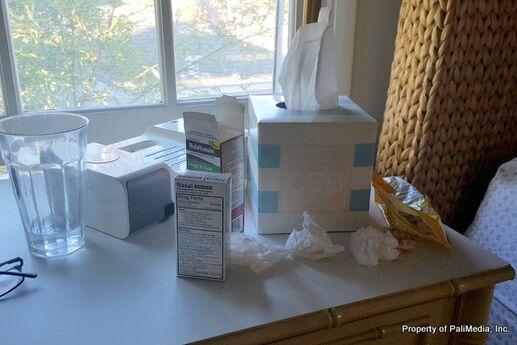Important Facts About Pregnancy and the Flu
Preparing for a new baby is an exciting time, but as any expectant mom will tell you, it can also be stressful. And the news that the swine flu is striking pregnant women harder than other people doesn't help. So whether you just found out you're pregnant or are about to deliver, arm yourself with these facts to protect yourself and your growing baby from illness this winter.
Flu Fact No. 1: Pregnant women are more at risk for seasonal flu.
“There are complicated changes that occur in a woman's body to allow her to carry around a fetus and not reject it," says Dr. Nancy Cossler, an ob-gyn at Case Medical Center in Cleveland. "One change is that there is a tamping down of your immune system, which means you're more at risk for many illnesses, including the flu."
Flu Fact No. 2: Getting the flu shot is the most effective way to reduce your flu risk.
Pregnant women should get the seasonal flu vaccine. It's safe to get it at any point during your pregnancy. Just be sure you get the injected version, which is made with killed flu virus. The other type of vaccine, the nasal spray, is not approved for pregnant women because it is made with a live, weakened flu virus.
If, however, you got the nasal spray before you realized you were pregnant, you likely won't experience any problems. Nevertheless, tell your doctor about it.
In addition, although there is no evidence that thimerosal, a mercury preservative in vaccines, causes any harm to pregnant women or a fetus, there are some thimerosal-free vaccines available, if that's what you desire. The Centers for Disease Control and Prevention advises that pregnant women get vaccinated with either the regular or thimerosal-free vaccines.
Flu Fact No. 3: The flu shot also protects your growing baby.
When you get vaccinated, your body actually passes the vaccine's protective antibodies on to your developing fetus, which can boost your newborn's immunity during the first six months of life.
“Good studies show that pregnant women who get vaccinated against the seasonal flu give birth to babies who are less likely to get sick themselves," says Cossler. Another way to stretch out a vaccine's protective benefits: breastfeed. When you do, you'll continue to pass the antibodies you received from the vaccine on to your baby.
Flu Fact No. 4: Mitigating the spread of germs reduces your flu risk.
Do all you can to stop the spread of germs. When it comes to your hands: wash, wash and wash again -- as soon as you come home, before you eat, after running errands. It's a universal precaution that can prevent illness, says Cossler. If soap and water aren't handy, keep an alcohol-based sanitizer with you. Avoid people who are sick and try to touch fewer surfaces, such as door handles, elevator buttons and even your own nose.
Flu Fact No. 5: Don't ignore any flu-like symptoms.
The most common flu indicators are fever, cough, sore throat, runny or stuffy nose, body aches, headaches, chills, fatigue and sometimes diarrhea or vomiting. If you have some or all of these, stay home, drink plenty of water and call your doctor right away. You may be given an antiviral medicine that safely treats the flu in pregnant women and can be taken at any time during pregnancy.
The bottom line is this: It's important to know that the flu isn't spread through the air you breathe, but by respiratory droplets that you touch and then spread to yourself by rubbing your eyes or nose. If you and everyone in your family take precautions and get vaccinated, you can avoid the flu this season. And that's good for you and your baby.
Photo by ???????? Janko Ferlič on Unsplash
Like this article? Get more by following us on Facebook at Beauty & Confidence.






